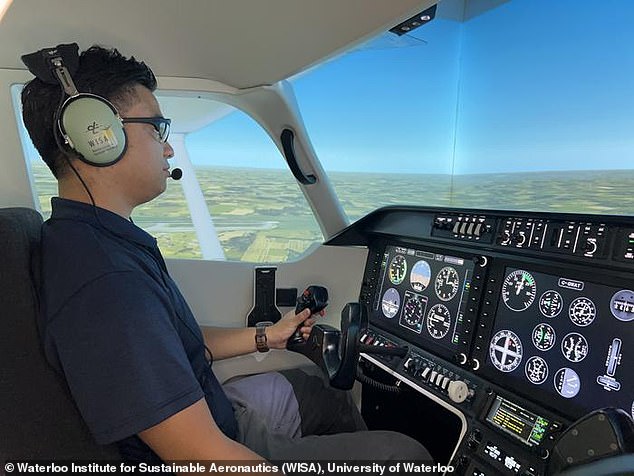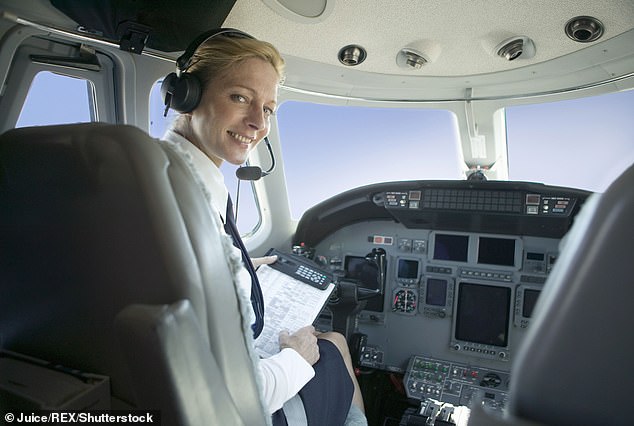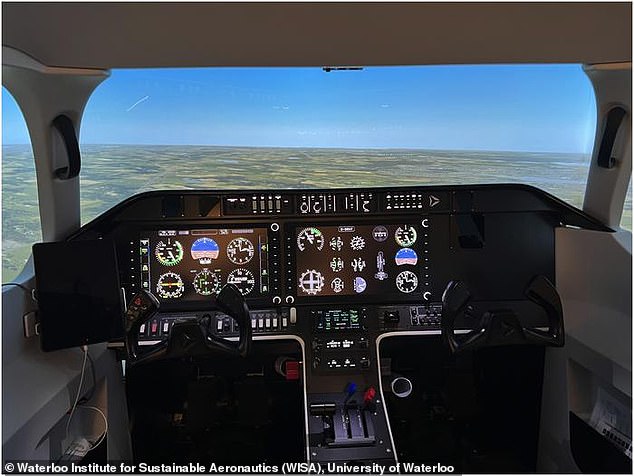By WILIAM HUNTER, SCIENCE & TECHNOLOGY REPORTER
Published: | Updated:
If you’re planning on jetting off for your holidays this summer, you might hope to find a woman behind the controls.
Although 90 per cent of pilots are men, a new study has found that female pilots perform better under pressure than their male counterparts.
The researchers say that women have ‘unique strengths’ that male pilots lack, which give them steadier hands and cooler heads in the cockpit.
During testing, both genders performed similarly in some areas, but women made fewer errors under pressure.
Women demonstrated more stable landing approaches, completed tasks faster in emergency scenarios, and showed greater situational awareness.
Researchers from the University of Waterloo, Canada, tested how pilots of different genders responded to visual information while flying.
Lead author Dr Naila Ayala says: ‘These findings are exciting because they push us to rethink how we evaluate pilots.
‘Our study shows that women may be better at keeping control and making decisions in stressful flight scenarios.’

Previous studies have looked at how the different genders process visual information and perform tasks under pressure.
However, little is known about how this actually affects performance in real-life scenarios such as piloting and aircraft.
To study these gender differences, 20 pilots with less than 300 hours of flight time, 10 male and 10 female, completed flights in a cutting-edge flight simulator.
The participants faced a mixture of typical flights and emergency situations, such as engine failures, that require quick thinking and fast reflexes.
At the same time, each participant wore eye-tracking glasses to record where they were looking and how they responded to what they saw.
The researchers found that both male and female pilots had nearly identical ‘visual attention patterns’, but female pilots still tended to make fewer mistakes.
This means that, even though men and women paid attention to the same information during the flight, women responded to that information more consistently and with greater accuracy.
Dr Ayala says this doesn’t mean that flights are going to be safer with women in the cockpit, but rather that ‘in this specific instance, female pilots may outperform male pilots.’


Dr Ayala told Daily Mail: ‘It is more the case that specific groups of pilots may be better equipped to manage certain types of aviation scenarios, while other groups are better equipped to manage other types of scenarios.’
That could have big implications in a profession which is still massively dominated by men at all levels.
Recent studies have shown that just 6.5 per cent of pilots working for UK companies are women, with a pay gap of 50 per cent or more between male and female staff at some firms.
‘I think it is concerning that only 6 per cent of the aviation workforce comprises of women in general,’ says Dr Ayala.
‘Given the shortages in pilots, this study demonstrates that there are data to challenge traditional assumptions in aviation, which may be the source of barriers to entry or to retaining female pilots.’
The researchers hope that these findings can change the way pilots are assessed and encourage companies to recruit more women.
Co-author Suzanne Kearns says: ‘Understanding how different people perform under pressure helps us build better training programs for everyone, safer cockpits, and more inclusive aviation systems.
‘At a time when the industry is facing a pilot shortage, tapping into the full potential of all pilots, regardless of gender, is more important than ever.’








